We leveraged our decades-long experience in the traction battery pack testing field in several ways: to facilitate the client’s aggressive schedule for specifications development and design, build, and deploy an automated battery test solution.
The client provided DMC with a high-level description of their basic need for an incoming inspection on an aggressive timeline. DMC partnered with the client’s engineering staff to outline a high-level test specification. From this, we were able to quickly deliver a complete test system configured to the client’s specific needs. We met the client’s rapid start-of-production target by leveraging DMC’s battery test platform toolkit, National Instruments (NI) VeriStand, and the VeriStand Custom Device provided for Elektro-Automatik (EA) battery cyclers.
DMC engineers designed a solution based on the NI VeriStand platform and around COTS hardware from NI, EA, and other vendors. We designed the solution to perform the testing required for incoming inspection of the client’s battery packs.
We followed a well-structured, but highly accelerated, project process to design, program, fabricate, and commission the system. The completed system dramatically increased the client’s quality control capabilities relative to the manual inspections previously done.
DMC delivered a fully open solution (including all source code and hardware schematics), enabling the client’s in-house process and test engineers to maintain, refine, and expand the system over time — supporting any future test requirements.
The DMC Battery Testing Advantage:
- DMC collaborated with the client to develop firm test specifications from their initial high-level direction.
- DMC developed a test system, hardware, and software with requirements based on test specifications, supported client reviews, and incorporated feedback into a final design approval.
- DMC determined the best test system hardware and software to meet client requirements and be completed within aggressive schedule requirements.
- DMC developed a high-level architecture for a long-term automated battery test system that met all test requirements and positioned the system for future flexibility and potential reuse/expansion.
- DMC leveraged collections of internal template projects, pre-tested architectures, code libraries, and quality check processes to improve schedule and cost associated with software development — including the use of the NI VeriStand Platform.
- DMC used a proven project process that involved quality checks, code reviews, and iterative testing to ensure project success.
- DMC called upon several key “lessons-learned” from previous projects to improve the efficiency of onsite testing hours: improving schedule and cost.
- DMC worked collaboratively with this client to provide full transparency and decision approval — while also acting as subject matter experts to recommend solutions, drive independent progress, and minimize the time investment required by client’s key engineering personnel.
Hardware Design and Architecture:
DMC worked with the customer to translate testing requirements into a concept system boundary diagram of the test stand. The diagram depicted the major hardware sub-systems, interfaces, and ownership. After incorporating client feedback and a final design review, DMC proceeded to detail out the client’s hardware system.
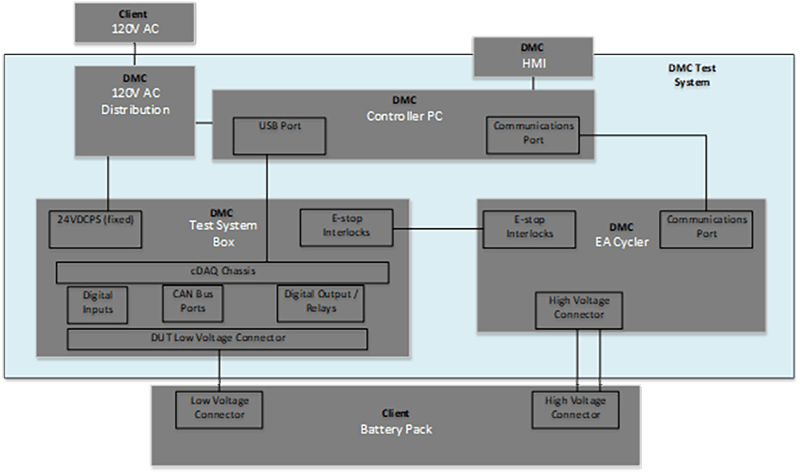
Test System Boundary Diagram
Based on the hardware requirements, DMC selected an EA PSB-model bi-directional power supply (also known as a battery cycler or inverter) to interface with the high-voltage connection of the client battery pack. Engineers used this battery cycler to charge and discharge the battery pack under the system PC's control. DMC has partnered with EA and NI on many projects involving battery simulation and testing, so our engineers had full confidence in the NI and EA provided LabVIEW software drivers and VeriStand Custom Device Module. These were key pieces to the test station performance as well as the rapid software development process.
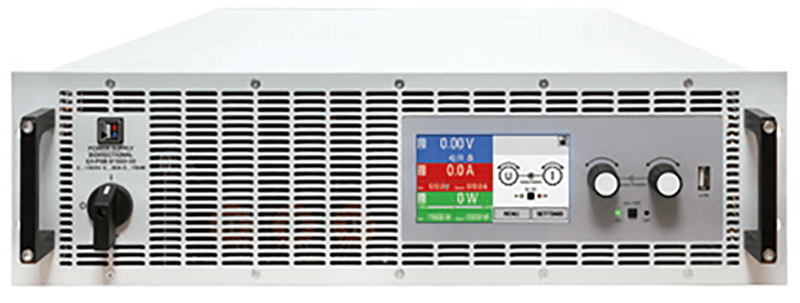
EA PSB Series Battery Cycler for charge/discharge
The test system used a custom-designed electrical sub-system to interface with the battery pack low-voltage power supply lines. It used CAN communication busses to control and monitor the pack during test activity. This subsystem utilized the NI cDAQ platform for integrating the digital I/O and CAN communications interfaces with the PC controller.
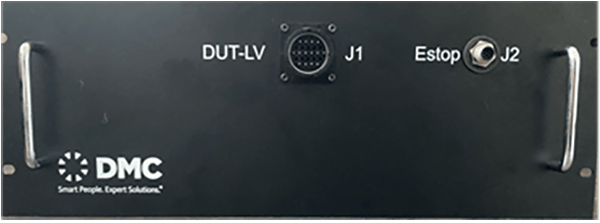
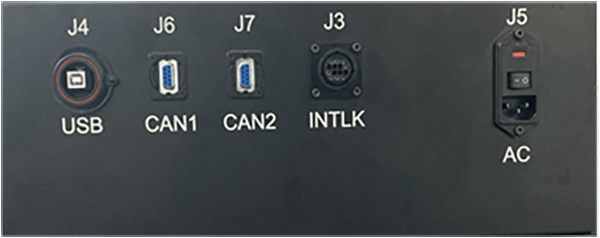
Custom Electronic Sub-System for Battery Pack Control and Communications (Top, front. Bottom, back.)
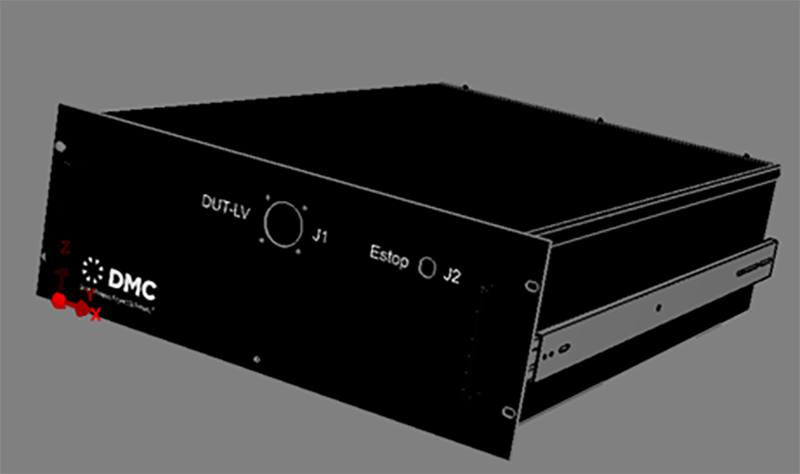
Design for Electronic Sub-System Enclosure
Software Architecture:
To increase the speed of the software development effort while meeting all system requirements, DMC selected the NI VeriStand development environment to serve as the framework of the software control system. VeriStand allowed DMC to take a platform-based approach that emphasized configurability and ease of use, while also allowing quick customization of test profiles so that they fit the client’s immediate needs exactly.
The NI VeriStand platform is used extensively throughout a broad range of industries to provide a powerful “data engine” foundation upon which purpose-built automated test systems can be established. VeriStand is easy to set up and use, and it has many powerful features that provide a fully comprehensive test system.
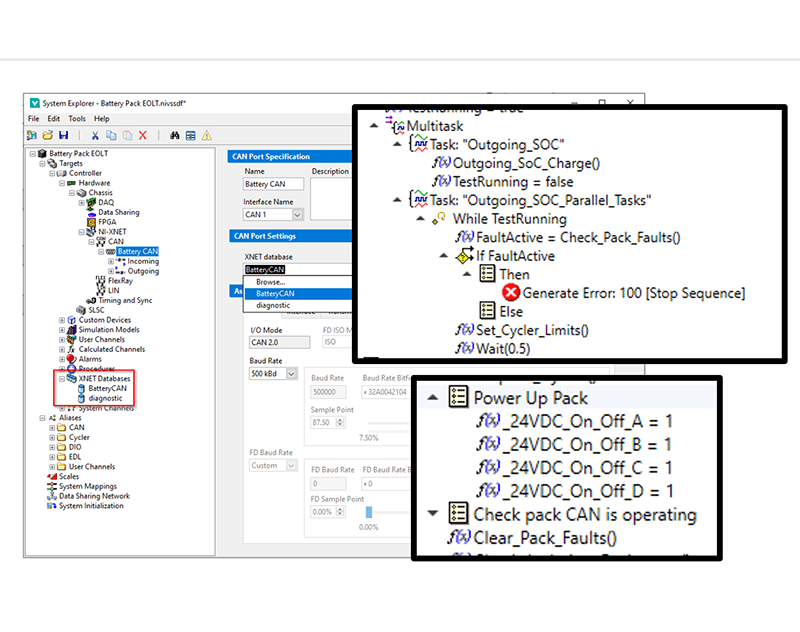
VeriStand project used for this solution
While the VeriStand data engine is typically run on NI real-time targets, such as CompactRIO or PXI controllers, this test system took advantage of VeriStand’s capability of running on a standard Windows PC. When running on a real-time target, the target’s operating system ensures that the timing of tasks is guaranteed within a very tight tolerance. Since this application did not require the strict timing of a real-time system, we used PC-based timing to acquire data and execute calculations at sufficiently regular and reliable intervals.
While VeriStand does not require programming skills for basic systems design and use, it does allow developers to leverage full Application Programming Interfaces (APIs) to extend and customize the system. Custom devices can be built using LabVIEW and can then be seamlessly integrated into VeriStand's engine. For this specific project, DMC used the EA Battery Cycler custom device plug-in to provide quick, easy, and full control of the EA cycler from within VeriStand.
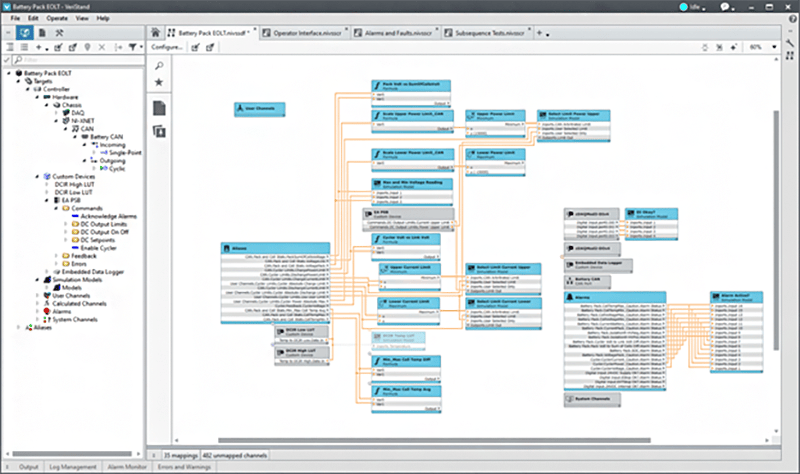
VeriStand model developed for this test solution
VeriStand was also used to monitor the hundreds of CAN channels being broadcast by the battery pack BMS during the test. Adding these channels to VeriStand involved simply importing the CAN database file the client provided and selecting the channels to monitor along the EA cycler channels.
This test system took full advantage of VeriStand’s flexible and native alarming system, which allows users to fully monitor critical battery system and cycler channels based on predefined constants or variables. This dynamic alarming notified the operator of the system state that triggered the alarm, and they took action quickly to shut down the system to a safe state.
VeriStand ships with a sequence editor that allows you to start sequences: which can edit variables, handle looping logic, and operate on multiple tasks at once. These simple, but powerful, sequences were used to provide the main test logic of the application and to interact with the system hardware components.
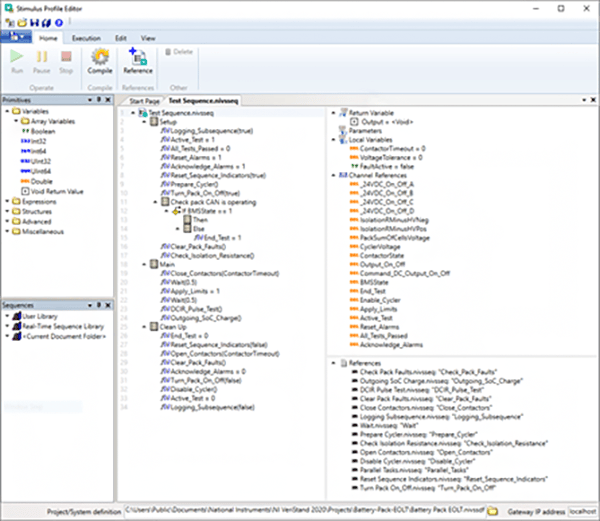
VeriStand Test Sequences for Battery Pack Testing
VeriStand executes its main control loop independently of the user interface (UI). This means a UI can be edited on the fly while tests are running, but it can also be locked to prevent accidently making modifications to a standard UI. An indicator for a particular channel (including a graph or chart) can be added to the UI anywhere it is needed.
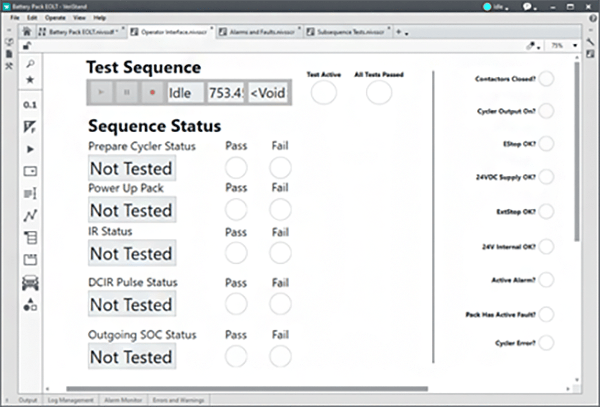
VeriStand Operator Screen
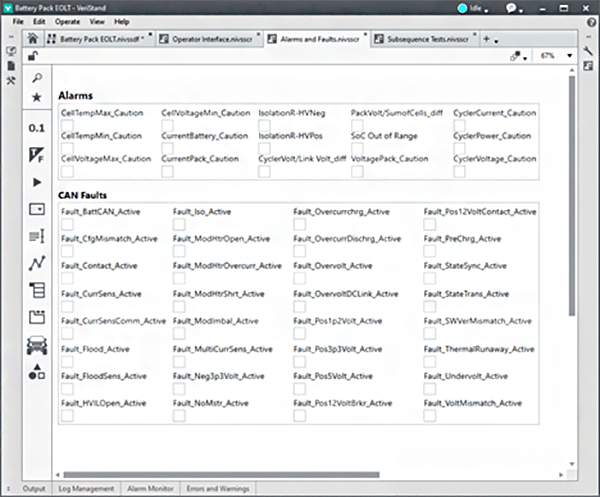
VeriStand alarm details screen
VeriStand allows users to easily implement a variety of data logging types and destinations within a test system. For this solution, DMC configured detailed logging of system operational state, detailed CAN bus logs, and internal variable changes to a timestamped TDMS file whenever the system is running a battery test sequence. This feature allows the user to quickly and easily debug and troubleshoot any failed test runs.
Project Outcome:
DMC delivered this automated battery pack test system to the client’s new manufacturing facility — meeting their aggressive timeline and test requirements. This DMC system has consistently ensured the quality and safety of every pack integrated into the electric drivetrain of their new battery-powered commercial electric vehicles.
Click Here for more information on DMCs latest generation of Battery Production Test systems.